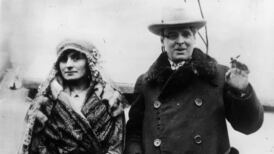The revitalisation of the area around Dublin’s Victorian fruit and vegetable market, with the extension of pedestrianisation from Capel Street, and the upgrade of parks and roads, is planned in advance of the reopening of the market.
The draft Markets Area Public Realm Plan aims to dramatically improve the environment of the north inner city area between Capel Street, Church Street, North King Street and the quays.
The 20 hectare district is home to prominent buildings including the Victorian market, which the council plans to reopen, and the Four Courts, as well as a number of parks, schools, apartment complexes and new hotels.
However, despite being sandwiched between the main northside shopping area and the entertainment districts of Henry Street and Capel Street to the east, and Smithfield, recently voted the second coolest neighbourhood in the world by Time Out, to the west, the markets area has remained rundown and marked by dereliction and illegal dumping.
READ MORE
The area was once a thriving market district, serving the city’s restaurants and grocers. While many wholesale traders still operate in there, the closure of the council’s fruit and vegetable market on Mary’s Lane in 2019 substantially reduced activity in the locality.
The council plans to reopen the market as a continental-style retail food market. A tender for conservation and refurbishment works on the Victorian building is due to issue by the end of this year, the council said. “When this construction phase is under way a tender process to engage an operator to fit out and operate the new retail market will issue.”
The public realm plan seeks to prepare the area for this new development, as well as improving the environment around the other commercial and residential streets.
“The area is currently undergoing significant change. The historic market uses are departing and the warehouse buildings are currently being redeveloped. It is important that the character of the area be protected and enhanced and a strategy be created to inform the development of the public realm by both public and private investors,” the council said.
The plan proposes pedestrianising Mary Street Little, which runs from Capel Street to the market building. This would result in a traffic-free zone from O’Connell Street, down Henry Street and Mary Street, across Capel Street and to the market along Mary Street Little.
From the market to Church Street, a one-way system would be introduced on Mary’s Lane to divert traffic away from the area. The currently very wide carriageway would be substantially reduced in width to just one narrow lane, with the footpaths significantly widened to create new seating, and potentially outdoor dining options.
Cuckoo Lane, which runs to St Michan’s Park in the northern part of the markets area, would also be pedestrianised, to enhance traffic free links from the northern end of Capel Street. A one-way system would also be introduced on George’s Hill, a north-south road which is currently too narrow for one-way traffic.
Throughout the area the council wants to reduce roads to their minimum width to allow as much space possible for pedestrians and to allow the introduction of street trees. It also plans to “rationalise” parking but says it will keep the existing levels of parking for residents.
The council is also planning significant upgrades to the parks in the area, including St Michan’s Park, between Halston Street, Green Street and Little Britain Street, as well as Fr Matthew Square, Ormond Square and Chancery Street park.
Public consultation on the plan will be held before the end of the year.












